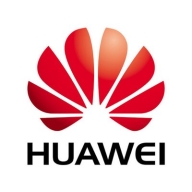


HPE File Storage and Object Storage and Huawei FusionStorage are two significant options for enterprise storage solutions. Users are happier with the pricing and support of HPE File Storage and Object Storage, but despite this, Huawei FusionStorage is seen as a superior product due to its features, as users feel it is worth the price.
Features: HPE File Storage and Object Storage are praised for their scalability and compatibility with various applications. Huawei FusionStorage is valued for its high performance and advanced data protection features. Users highlight the better integration capabilities of Huawei FusionStorage, comparing favorably against HPE's robust but less flexible feature set.
Room for Improvement: For HPE, users want improvements in management tools and better integration with third-party platforms. For Huawei FusionStorage, feedback suggests enhancing documentation and expanding customer support resources. Huawei’s need for better support contrasts with HPE’s desire for more refined management tools.
Ease of Deployment and Customer Service: HPE File Storage and Object Storage are often complimented for straightforward deployment and reliable customer service. Huawei FusionStorage deployment is slightly more complex, but users appreciate the comprehensive and responsive support available. Huawei’s support is deemed superior, even though deployment might be more challenging compared to HPE.
Pricing and ROI: HPE File Storage and Object Storage offer competitive pricing, making it an attractive choice for budget-focused users. Huawei FusionStorage, while more expensive, is seen as delivering higher ROI due to its superior performance and feature set. Users generally believe that the higher cost of Huawei FusionStorage is justified by its returns.


FlashBlade is the industry’s most advanced scale-out storage for unstructured data, powered by a modern, massively parallel architecture to consolidate complex data silos (like backup appliances and data lakes) and accelerate tomorrow’s discoveries and insights.
HPE File Storage and Object Storage efficiently manages large volumes of data, facilitating quick access, retrieval, and data integrity. It supports high-performance computing, scalability, robust security, and integrates seamlessly with existing infrastructure.
Recognized for its scalability, reliability, and security, HPE File Storage and Object Storage is valued for easy integration with existing systems and cost-effectiveness. It excels in handling large datasets and simplifies storage resource management. The solution supports diverse data formats and facilitates seamless data migration. However, users note challenges with the initial setup, performance during heavy data loads, and some integration and scaling issues. There are also concerns about the lack of advanced features, insufficient support documentation, and the system's high cost.
What are the most important features of HPE File Storage and Object Storage?Industries such as healthcare and finance utilize HPE File Storage and Object Storage for data archiving, backup, and analytics. In healthcare, it manages patient records and medical imaging, ensuring data accuracy and accessibility. In finance, it supports transaction data storage, compliance, and risk management. The versatility in handling diverse data storage needs makes it a valuable asset across sectors.
Huawei FusionStorage fully distributed cloud storage features massive scale-out capability designed for cloud-based architectures. The on-board storage system software combines the local storage resources of standard x86 servers into fully distributed storage pools, providing block, object, or file storage resources to the upper layer. An enterprise can easily obtain the required flexibility and efficiency in data storage to keep up with the ever-changing dynamics of business.
We monitor all Cloud Storage reviews to prevent fraudulent reviews and keep review quality high. We do not post reviews by company employees or direct competitors. We validate each review for authenticity via cross-reference with LinkedIn, and personal follow-up with the reviewer when necessary.